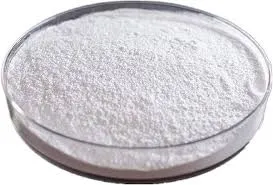
نوامبر . 18, 2024 18:40 Back to list
Current Trends and Costs of Hydroxyethyl Cellulose in the Market Today
The Price Dynamics of Hydroxyethyl Cellulose A Comprehensive Overview
Hydroxyethyl cellulose (HEC) is a water-soluble polymer derived from cellulose, primarily used as a thickening agent, binder, and film-forming agent in various industries, including pharmaceuticals, cosmetics, food, and construction. Understanding the price dynamics of HEC is essential for manufacturers and consumers alike, as it influences production costs, pricing strategies, and ultimately the market's overall competitiveness.
Factors Influencing Hydroxyethyl Cellulose Prices
1. Raw Material Costs The primary raw material for producing HEC is cellulose, which is extracted from wood pulp and cotton. Fluctuations in the prices of these raw materials directly impact HEC production costs. Environmental regulations and the availability of cellulose sources also play a crucial role. For instance, increased demand for sustainable and eco-friendly products has led to a rise in prices for sustainably sourced cellulose.
2. Production Process The process of synthesizing hydroxyethyl cellulose involves several chemical reactions, including ethylene oxide treatment. The complexity and energy requirements of these processes can affect overall production costs. Recent technological advancements that enhance production efficiency and reduce energy consumption may lead to more stable pricing in the future.
3. Market Demand The demand for HEC is driven by its applications across various industries. In pharmaceuticals, it is used in drug formulations as a stabilizer and thickening agent. In cosmetics, it serves as a basis for lotions and creams. Additionally, the construction industry utilizes HEC in joint compounds and as an additive to improve the workability of cement. A surge in these industries can lead to increased demand and, consequently, higher prices. For example, the recent uptick in the construction sector, particularly in emerging markets, has positively influenced HEC prices.
4. Trade Policies and Tariffs International trade policies also impact HEC prices. Tariffs on imports of raw materials or finished products can lead to increased costs for manufacturers, which are often passed on to consumers. Global trade tensions and changing regulations foster unpredictability in supply chains, further complicating price projections.
hydroxyethyl cellulose price

5. Technological Advancements Innovations in production technology can lower the costs associated with manufacturing HEC. For example, the development of more efficient synthesis methods or alternative production pathways that utilize less expensive materials can lead to lower market prices. As research continues in this area, it is likely to influence the future pricing landscape of HEC.
6. Global Economic Conditions Economic stability or instability influences consumer purchasing power and industry investment decisions, which in turn affect demand for HEC. During economic downturns, companies may seek to reduce costs, leading to decreased demand and potential price drops. Conversely, during periods of economic growth, increased investment in infrastructure and consumer goods could push prices higher.
Current Trends in HEC Pricing
As of late 2023, the market for hydroxyethyl cellulose has shown notable fluctuations. There has been a rising trend in prices attributed to heightened demand from both the pharmaceutical and construction sectors. However, some suppliers are adopting cost-cutting measures to remain competitive, resulting in a varied pricing landscape.
Moreover, sustainability trends are placing pressure on producers to incorporate eco-friendly practices and materials, which could affect pricing structures in the long term. Companies that can effectively blend sustainability with cost-effectiveness are likely to gain a competitive edge in the market.
Conclusion
The pricing of hydroxyethyl cellulose is influenced by a multitude of factors, including raw material costs, production processes, market demand, trade policies, technology, and overall economic conditions. As industries continue to evolve, the dynamics of HEC pricing will likely experience shifts that stakeholders should closely monitor. Understanding these factors is crucial for businesses to make informed decisions, optimize production strategies, and create competitive pricing models. As demand for multifunctional and sustainable products continues to grow, the hydroxyethyl cellulose market will undoubtedly play a vital role in shaping future industrial applications.
-
Versatile Hpmc Uses in Different Industries
NewsJun.19,2025
-
Redispersible Powder's Role in Enhancing Durability of Construction Products
NewsJun.19,2025
-
Hydroxyethyl Cellulose Applications Driving Green Industrial Processes
NewsJun.19,2025
-
Exploring Different Redispersible Polymer Powder
NewsJun.19,2025
-
Choosing the Right Mortar Bonding Agent
NewsJun.19,2025
-
Applications and Significance of China Hpmc in Modern Industries
NewsJun.19,2025







